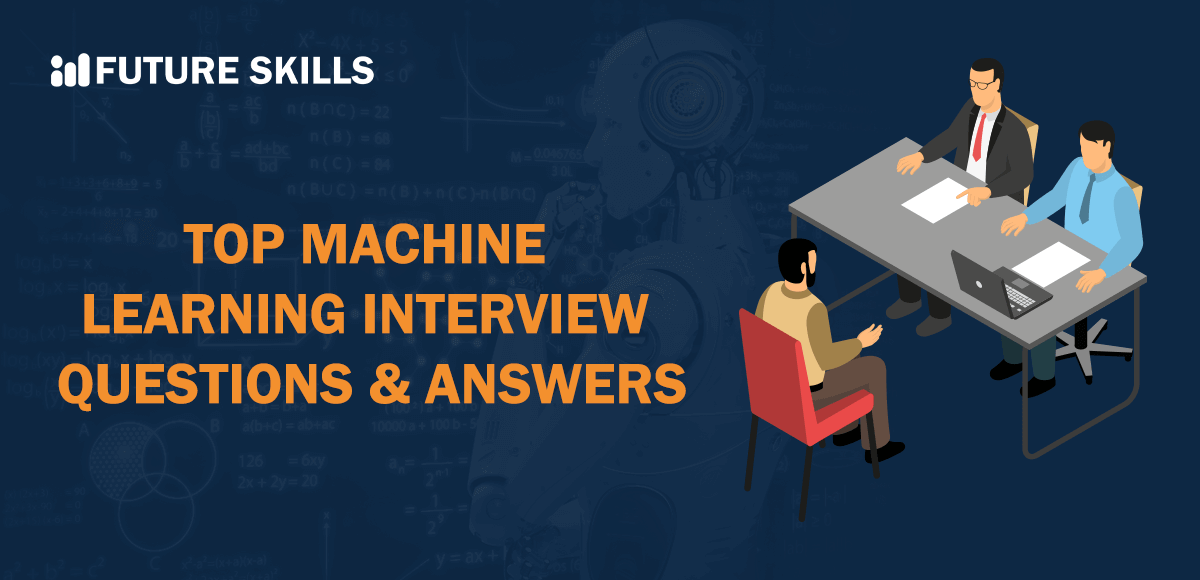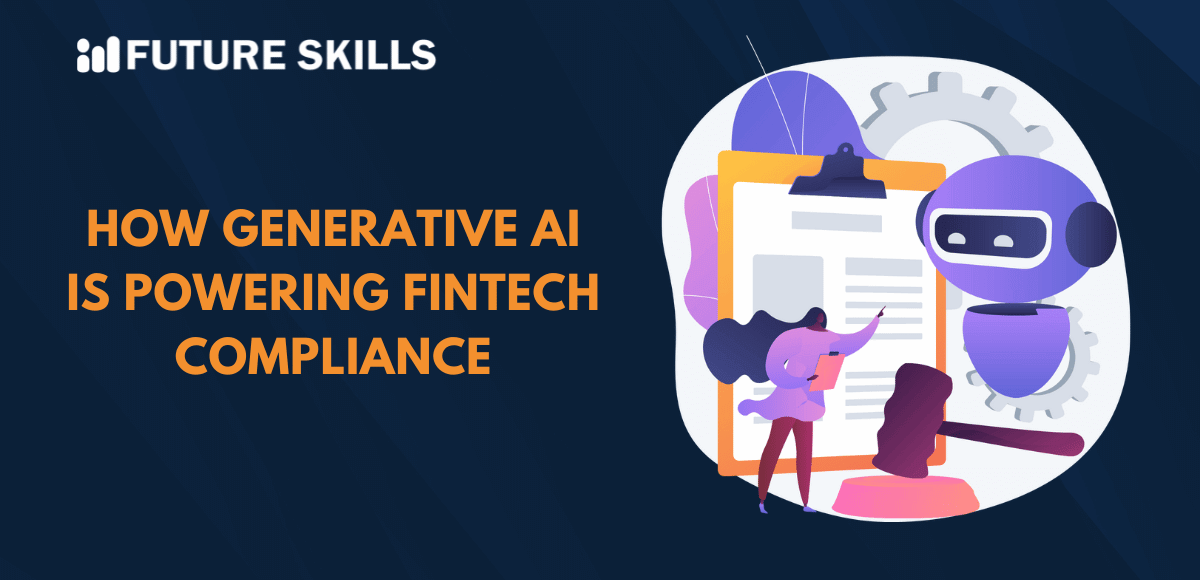Machine learning and artificial intelligence are the two most powerful and popular technologies that have changed world in different ways. Forbes claims that over 75% of businesses across different industries have implemented machine learning. According to a Netflix employee, almost 80% of the content users watch is recommended by the ML-based recommendation engine.
Therefore, the growing interest in machine learning questions and answers is an inevitable phenomenon as more people become curious about machine learning and its potential. At the same time, the rise in the use of machine learning for diverse applications across different industries also creates demand for ML experts. You can also become a valuable asset in the machine learning job market with a strong command over ML skills. Let us find out the top ML interview questions that you can come across in interviews for jobs.
Want to gain practical skills in using OpenAI API and implementing API calls to facilitate LLM interactions, Enroll now in the Certified Prompt Engineering Expert (CPEE)™ Certification.
Top Machine Learning Interview Questions
If you want to find answers to the questions “What are the best questions for an ML interview?”, then you will find multiple alternatives. When you apply for jobs in machine learning, you can expect questions with varying levels of difficulty. The following questions are some of the common additions to any interviewer’s checklist for ML jobs.
Basic Machine Learning Interview Questions
The first part of any interview for machine learning jobs would revolve around checking your expertise in machine learning fundamentals. Here are some of the common machine learning interview questions that you would come across in the initial rounds.
1. Why does the world need machine learning?
Machine learning can resolve different issues and help capitalize on opportunities in artificial intelligence, data analysis, and computer science. It can support complex problem-solving and makes sense of the massive amount of data being generated every moment. Machine learning has also played a vital role in enhancing natural language processing, personalizing user experiences, and facilitating image and speech recognition tasks.
2. How is supervised learning different from unsupervised learning?
The best machine learning questions also test your knowledge of the techniques used in machine learning, such as supervised and unsupervised learning. Supervised learning relies on the use of labeled data for training, while unsupervised learning does not use data with explicit labels. Supervised learning is useful for regression and classification. Unsupervised learning is fit for anomaly detection, clustering, and dimensionality reduction.
3. What are the real-world uses of clustering algorithms?
Clustering algorithms are generally used to gather similar data points in different types of real-world applications. Some of the common applications of clustering algorithms include customer segmentation, image segmentation, document clustering, social network analysis, and recommendation systems.
Level up your ChatGPT skills and kickstart your journey towards superhuman capabilities with Free ChatGPT and AI Fundamental Course.
4. Can you explain the difference between classification and regression?
You may look for answers to the questions “What are the best questions for an ML interview?” by referring to such questions. Classification refers to the task that involves prediction of a discrete class label. For example, classification of email as spam or non-spam is a classification task. On the other hand, regression refers to the task of predicting a continuous quantity. Prediction of price of a stock for a specific period of time is a regression task.
5. What is the impact of selection bias?
Selection bias refers to a statistical error that leads to bias in the sampling portion of experiment. The error is responsible for selection of one sampling group more frequently than other groups in the experiment. Selection bias can lead to inaccurate conclusions without proactive identification.
6. When should you use semi-supervised learning?
The top ML interview questions on fundamental concepts would also reflect on the importance of semi-supervised learning. It is a blend of supervised and unsupervised learning in which the algorithm is trained by using a combination of unlabeled and labeled data.
Semi-supervised learning is applicable in situations where you have a small labeled dataset and a massive unlabeled dataset. Some examples of semi-supervised learning applications include self-driving cars, protein sequence classification, and automatic speech recognition.
7. What is the KNN or K Nearest Neighbor Algorithm?
K Nearest Neighbor or KNN algorithm is a supervised learning classifier you can use in machine learning. It is one of the best machine learning questions to test your knowledge of technicalities of machine learning. KNN algorithm utilizes proximity for classification of labels or predicting the groups of individual data points. You can use the KNN algorithm for classification and regression. In addition, KNN is non-parametric and does not make underlying assumptions about data distribution.
8. Do you know about ensemble learning techniques?
The three notable ensemble learning techniques include bagging, stacking, and boosting. Bagging involves a combination of multiple models through voting, training on random subsets, and averaging. Boosting relies on iterative training of a sequence of models. Stacking focuses on training multiple models with the same data alongside using the predictions from trained models as inputs for other models.
9. Can you explain the working mechanism of a decision tree?
The common machine learning interview questions might also focus on the working of decision trees. It is a flowchart-like structure in which every internal node serves as a representation of a decision according to value of specific feature. On the contrary, every leaf node serves as a representation of the final predicted label.
10. What is reinforcement learning?
Reinforcement learning is an important subdomain of machine learning that enables AI systems or agents to learn by using feedback for their actions. The feedback can be negative or positive and associated with a penalty or reward, and the model would pursue maximization of the reward function.
Advanced Machine Learning Interview Questions
The outline of machine learning questions and answers for an interview would also include questions on advanced topics. Here are the notable questions that would test your knowledge of the technical topics in machine learning.
11. What is the goal of principal component analysis?
Principal Component Analysis, or PCA, is an unsupervised linear transformation technique that you can use to reduce dimensionality. The method involves searching for new features with maximum variance and orthogonal to each other. PCA helps in transformation of the original data to linearly uncorrelated variables, known as principal components.
12. Do you know the importance of feature selection in machine learning?
Feature selection is also a notable topic for top ML interview questions on advanced concepts. It refers to identification of the most relevant input features that can offer best predictive power for developing ML models. Feature selection helps improve model accuracy and interoperability while reducing overfitting and training time.
13. What are the primary challenges of working with imbalanced datasets?
Imbalanced datasets generally feature a large number of samples in one class as compared to others. The primary challenges with imbalanced datasets are the poor performance of minority classes and inappropriate evaluation metrics.
14. What is a dropout in neural networks?
The best machine learning questions would also test your command over technical topics that might have missed the attention of other candidates. Dropout serves as a regularization technique where a fraction of neurons in a layer are dropped or deactivated randomly during training. It would prevent the model from depending too much on a specific neuron and help in improving model generalization.
15. Can you explain the working mechanism of transfer learning?
Transfer learning involves utilizing a pre-trained model on a large dataset for solving similar and potentially smaller-scale problems. It is a trusted solution for achieving faster convergence and improved performance by leveraging limited data.
16. Do you know how a convolutional neural network works?
Convolutional Neural Networks, or CNNs, are deep learning models created to work with grid-like data, such as images. It includes convolutional layers, fully connected layers, and pooling layers. Each layer serves a distinct role in ensuring the overall functionality of the CNN.
17. What is the significance of sequence-to-sequence models?
Sequence-to-sequence models are also one of the topics in common machine learning interview questions on technical concepts. The models are a variant of deep learning architecture created to manage problems where the input and output are sequences of different lengths. The models generally include an encoder-decoder architecture and are useful in speech recognition, machine translation, and text summarization.
18. What is one-shot and few-shot learning?
One-shot learning and few-shot learning help in developing models to recognize new classes or concepts with limited training data. The model learns to recognize new classes or objects with only one or a few samples in one-shot learning. On the other hand, the model uses a small set of examples for new classes in few-shot learning.
19. Can you explain the attention mechanism in deep learning?
The list of machine learning questions and answers for technical interviews would be incomplete without referring to attention mechanism. It is an important technique in deep learning that can help sequence-to-sequence models improve their ability to manage long-range dependencies. Attention mechanism helps the model in dynamic allocation of attention to different input elements, thereby serving improved performance.
20. What is spectral clustering?
Spectral clustering refers to an unsupervised learning technique that helps in creating partitions of a dataset, resulting in clusters. It leverages the similarity graph of data and eigenvectors of Laplacian matric for finding low-dimensional embeddings. Spectral clustering is unique as it performs clustering and dimensionality reduction simultaneously.
Final Words
The outline of the common machine learning interview questions and answers shows that you have many topics to learn to qualify for a machine learning job. You can notice that the top ML interview questions focus on the most crucial concepts required for ML jobs. It is important to expand your horizon of knowledge about machine learning by reflecting on other crucial topics. Dive deeper into the world of machine learning and prepare for the toughest interview questions right away.





